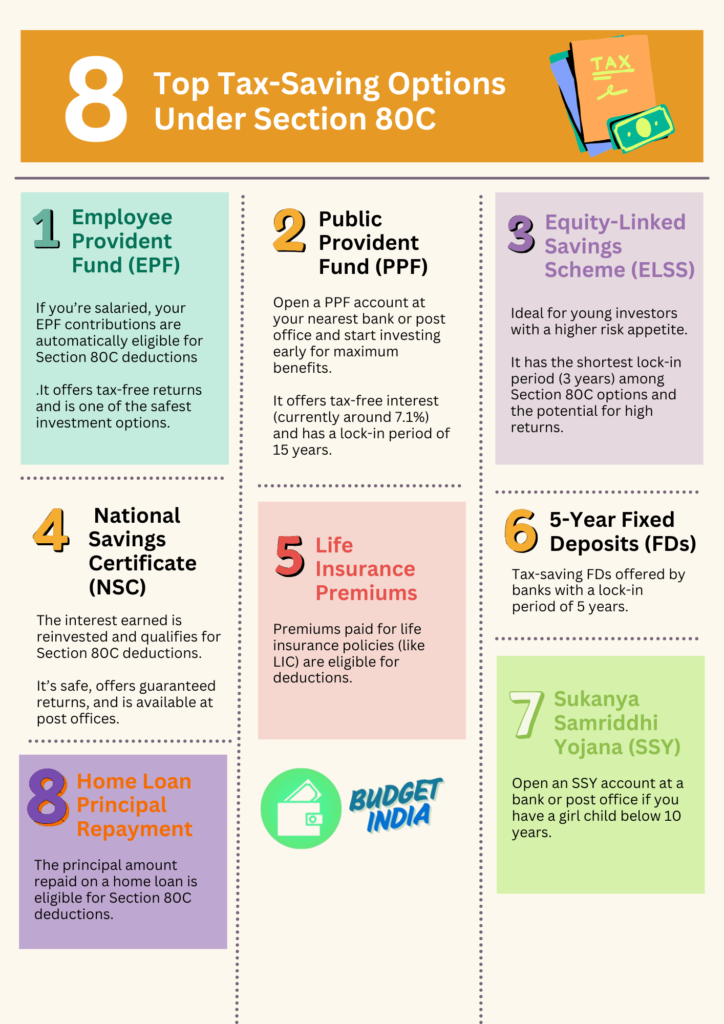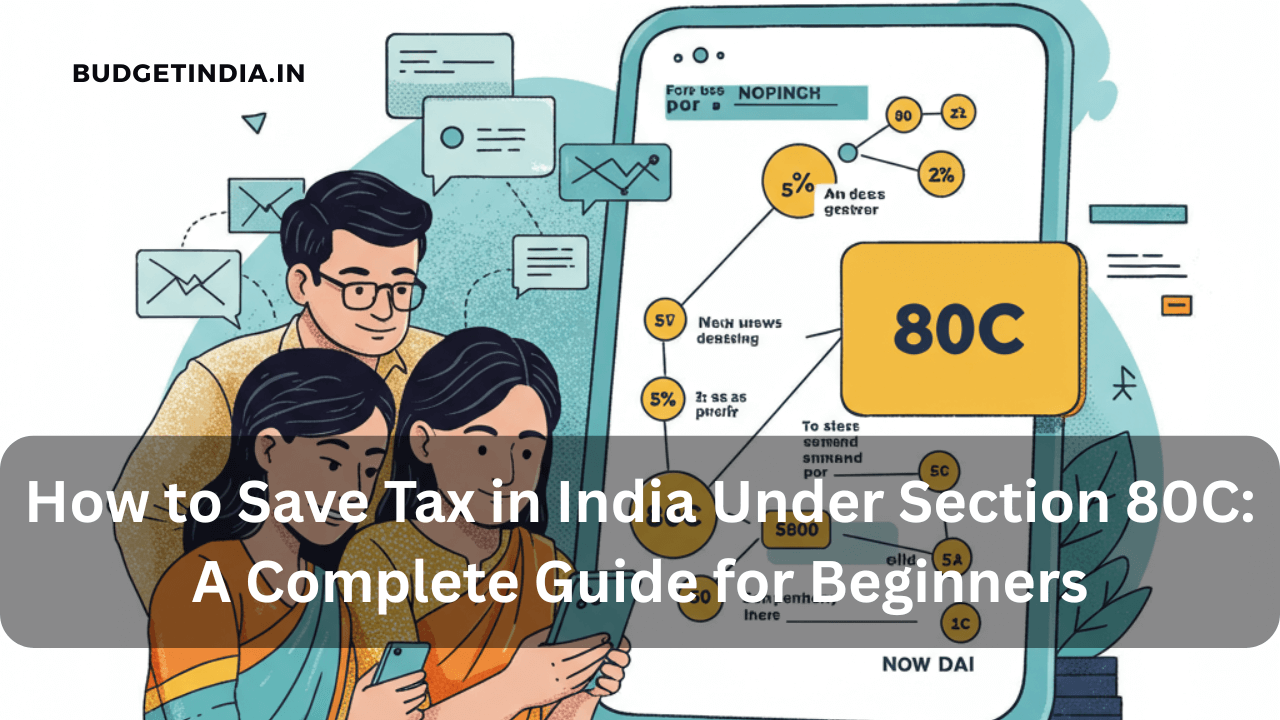Paying taxes is a responsibility, but did you know you can legally save a significant amount of money on your taxes? Section 80C of the Income Tax Act is one of the most popular and powerful tools for tax-saving in India. Whether you’re a salaried professional, a freelancer, or a business owner, understanding Section 80C can help you reduce your taxable income and keep more money in your pocket.
In this beginner-friendly guide, we’ll break down everything you need to know about Section 80C, including the best tax-saving options, how to maximize your savings, and common mistakes to avoid. Let’s dive in!
What is Section 80C?
Section 80C is a provision under the Income Tax Act that allows individuals and Hindu Undivided Families (HUFs) to claim deductions of up to ₹1.5 lakh from their taxable income. This means if you invest in eligible tax-saving instruments, you can reduce your taxable income by ₹1.5 lakh, which translates to significant tax savings.
For example, if your annual income is ₹10 lakh and you invest ₹1.5 lakh in Section 80C instruments, your taxable income reduces to ₹8.5 lakh. This can save you up to ₹46,800 in taxes (assuming you’re in the 30% tax bracket).
Top Tax-Saving Options Under Section 80C
Here’s a list of the most popular and effective tax-saving instruments under Section 80C:

1. Employee Provident Fund (EPF)
- What it is: A retirement savings scheme where both you and your employer contribute a portion of your salary.
- Why it’s great: It offers tax-free returns and is one of the safest investment options.
- Tip: If you’re salaried, your EPF contributions are automatically eligible for Section 80C deductions.
2. Public Provident Fund (PPF)
- What it is: A long-term savings scheme backed by the Government of India.
- Why it’s great: It offers tax-free interest (currently around 7.1%) and has a lock-in period of 15 years.
- Tip: Open a PPF account at your nearest bank or post office and start investing early for maximum benefits.
3. Equity-Linked Savings Scheme (ELSS)
- What it is: A mutual fund scheme that invests in equities and offers tax benefits.
- Why it’s great: It has the shortest lock-in period (3 years) among Section 80C options and the potential for high returns.
- Tip: Ideal for young investors with a higher risk appetite.
4. National Savings Certificate (NSC)
- What it is: A fixed-income investment scheme offered by the Government of India.
- Why it’s great: It’s safe, offers guaranteed returns, and is available at post offices.
- Tip: The interest earned is reinvested and qualifies for Section 80C deductions.
5. Life Insurance Premiums
- What it is: Premiums paid for life insurance policies (like LIC) are eligible for deductions.
- Why it’s great: It provides financial security for your family while saving taxes.
- Tip: Ensure the policy is in your name or your spouse’s/children’s name to claim deductions.
6. 5-Year Fixed Deposits (FDs)
- What it is: Tax-saving FDs offered by banks with a lock-in period of 5 years.
- Why it’s great: It’s a low-risk option with guaranteed returns.
- Tip: Compare interest rates across banks before investing.
7. Sukanya Samriddhi Yojana (SSY)
- What it is: A savings scheme for the girl child, offering high interest rates and tax benefits.
- Why it’s great: It’s a great way to secure your daughter’s future while saving taxes.
- Tip: Open an SSY account at a bank or post office if you have a girl child below 10 years.
8. Home Loan Principal Repayment
- What it is: The principal amount repaid on a home loan is eligible for Section 80C deductions.
- Why it’s great: It helps you save taxes while building equity in your home.
- Tip: Combine this with the interest deduction under Section 24 for maximum savings.
How to Maximize Your Section 80C Savings
- Start Early: The earlier you invest, the more time your money has to grow.
- Diversify Your Investments: Don’t put all your money into one instrument. Spread it across options like ELSS, PPF, and insurance for a balanced portfolio.
- Plan for the Long Term: Some instruments like PPF and SSY have long lock-in periods but offer higher returns.
- Keep Track of Deadlines: Ensure you invest before the financial year ends (March 31) to claim deductions for that year.
Common Mistakes to Avoid
- Not Utilizing the Full ₹1.5 Lakh Limit: Many people miss out on maximizing their savings by not investing the full amount.
- Ignoring Lock-In Periods: Be aware of the lock-in periods for different instruments to avoid liquidity issues.
- Overlooking Documentation: Keep all investment proofs and receipts handy for filing your Income Tax Return (ITR).
FAQs About Section 80C
1. Can I claim more than ₹1.5 lakh under Section 80C?
No, the maximum deduction allowed under Section 80C is ₹1.5 lakh per financial year.
2. Are Section 80C investments tax-free on maturity?
It depends on the instrument. For example, PPF and EPF are tax-free, while ELSS is subject to capital gains tax.
3. Can I change my Section 80C investments every year?
Yes, you can choose different instruments each year based on your financial goals and risk appetite.
Final Thoughts
Section 80C is a powerful tool for tax-saving in India, but it’s essential to understand your options and plan your investments wisely. Whether you’re a beginner or someone looking to optimize your tax savings, this guide should help you make informed decisions.
Remember, the key to maximizing your savings is to start early, diversify your investments, and stay informed about the latest tax rules. So, go ahead and take the first step toward smarter tax planning today!
Disclaimer: The information in this article is for general informational purposes only and does not constitute financial, legal, or tax advice. While we strive to provide accurate and up-to-date details, tax laws and regulations may change. We recommend visiting the official Government of India websites and consulting with a tax professional to verify the latest rules and compliance requirements before making any financial decisions.






Leave a Reply